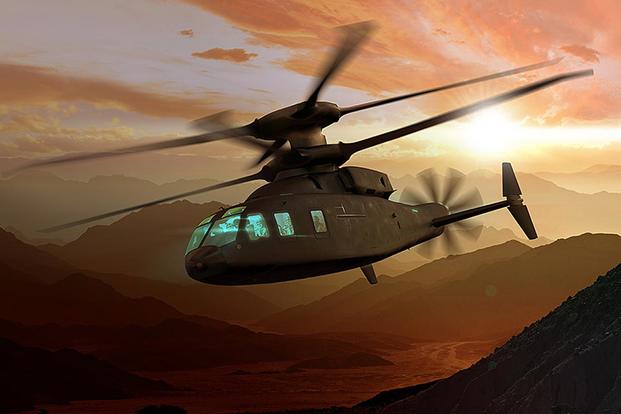The U.S. Coast Guard is watching how the Pentagon handles its Future Vertical Lift helicopter program over the next decade as its own MH-65 Dolphin fleet's flight hours continue to climb, the commandant of the service said Friday.
"We're watching the Department of Defense very carefully with Future Vertical Lift," Adm. Karl Schultz, the Coast Guard's 26th commandant, said during the annual Military Reporters & Editors conference outside Washington, D.C.
He explained that the MH-65, the Coast Guard's primary aircraft used aboard cutters during deployments, will pass 30,000 flight hours. The service has 98 in its inventory.
"We're in our 'Echo' upgrade -- that's our next iteration [life extension]," Schultz said. "We have to keep those things in air for a while, probably into 2030."
Related content:
- North Korea Is the Reason US Kept Cluster Bombs, Official Says
- Army to See Designs of Future Attack-Recon Helicopters in December
- Coast Guard Aircraft
Part of the Department of Homeland Security, which is facing years-long budget constraints, the Coast Guard will also push to keep its MH-60 Jayhawk fleet, similar to the Navy's Sea Hawks and Army's Black Hawks, flying past its intended service life.
"We're probably going to push those out to about 30,000 hours," Schultz said.
Explaining that manufacturing has ended for the Dolphin, he said, "We need to press in that gap here in the 2018-to-early-2030 timeframe."
MH-60s passed down from the Navy will help bridge the gap, but Future Vertical Lift also show promise, Schultz said.
Future Vertical Lift is a Pentagon program to field a new family of helicopters such as the Future Long Range Assault Aircraft to replace the UH-60 Black Hawk, as well as the Future Attack Reconnaissance Aircraft (FARA), by 2028. While the Army has invested the most time in the program, other services have also indicated interest in FVL platforms.
Schultz said today's Coast Guard fleet is comprised of rotary- and fixed-wing aircraft, noting that new C-130s have helped prolong its transport fleet.
Like the Air Force, the Coast Guard maintains a mix of older C-130Hs, but it's moving to an all J-model fleet. The fiscal 2018 budget gave the service permission to purchase its 15th J-model.
Schultz said the Coast Guard needs 22 newer C-130s overall. "We're optimistic there might be a 16th in the [fiscal 2019] budget," he said.
The service also inherited 14 C-27J Spartan aircraft from the Air Force in 2014.
"We do sit in that discretionary, non-defense part of the budget, so we're competing with a lot of national priorities," Schultz said. "[But] I can build a very strong case for a bigger Coast Guard."
-- Oriana Pawlyk can be reached at oriana.pawlyk@military.com. Follow her on Twitter at @Oriana0214.










